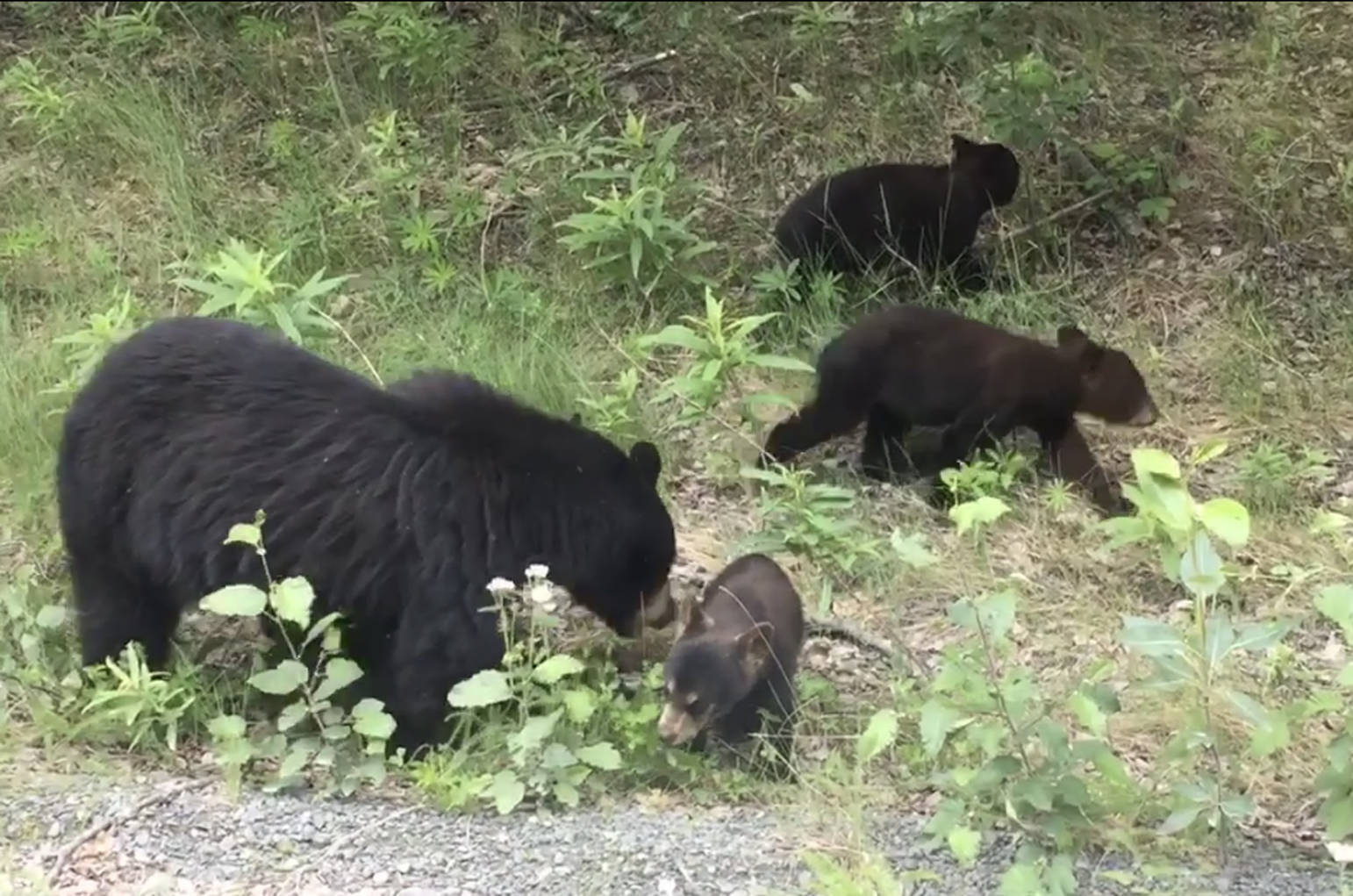Being six months pregnant in the dead of winter (as I am) has its challenges — from trying to zip up a coat that’s too small over an ever growing belly, to hobbling around in the snow without falling to open and close the driveway gate. There is also continually braving the freezing temperatures in search of the novel foods I crave. All of this got me to wondering how Alaskan wildlife handle their winter pregnancies.
Most mammals mate during the fall and give birth in the spring, but a select few actually give birth in the late winter or early spring. Some of the earliest mammals to give birth are brown and black bears, and wolverines, because they have adapted the reproductive strategy called embryonic diapause or delayed implantation. This process allows the animals to mate early in the year without becoming pregnant right away. Instead of the fertilized egg implanting in the walls of the uterus immediately, the egg develops into an eight-celled blastocyst that remains floating in the uterus in this dormant stage. The blastocyst eventually implants in the uterine wall if certain physiological requirements are met; at that point, it becomes a fetus.
Bears mate between May and July but implantation will not occur until October or November. If the female bear is able to gain enough weight before hibernation, the blastocysts will implant into the walls of the uterus and proceed to develop into cubs; otherwise the pregnancy will be terminated. Once she enters her den she will not eat or drink again until she emerges in June. Pregnancy demands a significant amount of energy and nutrients from the mother, and the entirety of her 6- to 8-week pregnancy is spent in the den.
Between January and March she will give birth to up to four cubs that are only 13 ounces when born and will spend the next 3 to 5 months nursing in the den. There are eight months between mating and birth, but the female is actually pregnant for less than two months of that time.
Wolverines are solitary animals that roam around the Kenai Mountains at very low population densities. Delayed implantation allows them to take advantage of meetings by mating when they have the opportunity, anytime from May to August. Similar to bears, the embryo will not implant unless the female wolverine has gained enough weight before she burrows into a deep snow den. Pregnancy usually lasts 4 to 6 weeks, and babies or kits are born in February through mid-March. Wolverines typically have two but sometimes up to four kits in each litter. When born, the kits are tiny and pure white, relying on their mother’s milk until they emerge in mid-May.
One of the earliest birds to nest here on the Kenai Peninsula is the great horned owl. Like most owls, these do not construct their own nests. Instead, they must find a suitable nest in tree cavities, cliff ledges, or old nests of other large birds. Great horned owls begin courting near the end of February, lay 2 to 5 eggs in April, which they then incubate for a month. Juvenile great horned owls rely on their parents to care and feed them until the fall.
In contrast, songbirds like orange-crowned warblers usually lay eggs in June or July and the fledglings are ready to leave the nest within a few weeks. It’s likely that great horned owls nest so early because it takes so long for their young to grow and mature. This timing also allows juveniles to practice hunting when the weather is mild and prey is plentiful.
Insects are a different story, invoking many reproductive strategies. Depending on the species, they overwinter as adults, larvae, pupae, or even eggs. To me, an insect overwintering as an egg is the closest to being pregnant. One genus (Aedes) of mosquito on the Kenai Peninsula overwinters as eggs and are known as “snow melt pool” insects. These eggs hatch in the icy water that forms as snow melts in April or May, emerging as adults in late May and early June. The rusty tussock moth (Orgyia antiqua) also overwinters as eggs that are laid on the outside of the female’s cocoon. These hatch in early spring as soon as foliage appears.
Animals that birth in late winter or early spring have some interesting reproductive strategies. To be honest, though, I think bears have the right idea. I wouldn’t mind spending the majority of my pregnancy sleeping in a cozy den!
Kyra Clark is a seasonal biological technician at Kenai National Wildlife Refuge. Find more information about the Refuge at http://www.fws.gov/refuge/kenai/ or http://www.facebook.com/kenainationalwildliferefuge.

